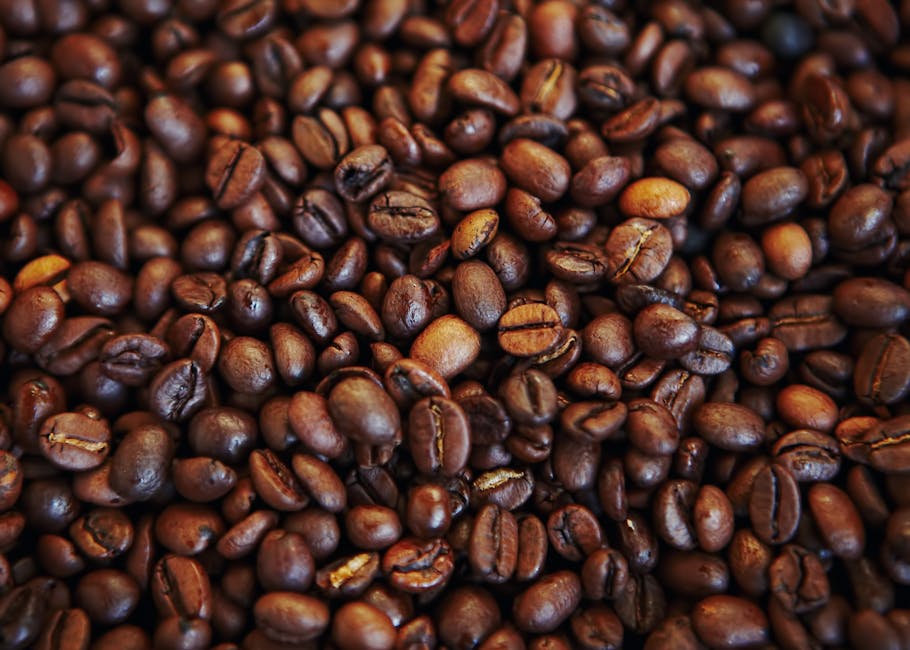Baked fish with lemon and herbs is a dish whose simplicity belies its rich history and global appeal. While pinpointing an exact origin is difficult, the fundamental concept – cooking fish with acidic citrus and aromatic herbs – has existed for centuries across diverse cultures. Ancient civilizations, lacking sophisticated refrigeration, relied on quick-cooking methods like baking or grilling to preserve fish, and the addition of lemon or other acidic fruits served as a natural preservative, enhancing flavor and extending shelf life. Evidence suggests that similar preparations existed in ancient Greece and Rome, where herbs like oregano and thyme were commonly used in cooking.
The specific combination of lemon and herbs, however, has evolved significantly over time, reflecting regional culinary traditions. Mediterranean cuisine, in particular, has embraced this method, with variations appearing in countries bordering the Mediterranean Sea. In Italy, for instance, you might find baked fish seasoned with rosemary, while in Greece, oregano and dill are common additions. The abundance of fresh herbs and citrus fruits in these regions has naturally led to their widespread use in fish preparation. Globally, fish is a significant source of protein, with the Food and Agriculture Organization of the United Nations estimating that over 170 million tonnes of fish were caught for human consumption in 2020. This highlights the importance of simple, yet flavorful, recipes like this one, which allow for the natural taste of the fish to shine.
Beyond its practicality, baked fish with lemon and herbs holds cultural significance as a symbol of fresh, healthy eating. It’s a dish often associated with coastal communities and their reliance on seafood as a staple food source. Furthermore, the simplicity of the recipe makes it accessible to home cooks of all skill levels, fostering a connection to traditional cooking methods and promoting mindful eating. The versatility of the dish also allows for endless variations: different types of fish can be used, along with a wide array of herbs and spices, catering to individual tastes and dietary preferences. This recipe offers a journey through culinary history, a celebration of fresh ingredients, and a simple yet satisfying meal.
Ingredients and Measurements
This recipe for Baked Fish with Lemon and Herbs yields two generous servings. The quantities can easily be adjusted to accommodate more guests; simply multiply the ingredient amounts proportionally.
For the freshest flavor, use high-quality, sustainably sourced fish fillets. We recommend firm, white fish such as cod, halibut, or snapper. Aim for fillets that are roughly 6-8 ounces each, though slight variations are acceptable. If your fillets are significantly larger or smaller, adjust the baking time accordingly.
Precise measurements are crucial for optimal results. We’ll be using both weight and volume measurements to ensure accuracy. For the dry ingredients, using a kitchen scale is recommended for the most precise results. If you’re using measuring cups and spoons, make sure to level them off with a straight edge.
Here’s a detailed list of ingredients and their measurements:
- Fish Fillets: 2 (6-8 ounces each), skin on or off (your preference). Tip: Pat the fillets dry with paper towels before seasoning to ensure even browning.
- Lemon: 1 medium, thinly sliced. Recommendation: Use a lemon with a bright, fragrant aroma for the best flavor. Reserve some lemon wedges for serving.
- Fresh Herbs: 1/4 cup chopped fresh herbs (a mix of parsley, dill, and thyme is ideal). Alternative: 2 tablespoons dried herbs (reduce the amount if using dried herbs as they are more potent).
- Olive Oil: 2 tablespoons (30 ml). Note: Use extra virgin olive oil for the best flavor. Avoid using flavored oils as they may overpower the delicate fish flavor.
- Garlic: 2 cloves, minced. Tip: Mince the garlic finely to distribute the flavor evenly. Alternatively, you can use 1 teaspoon of garlic powder.
- Salt: 1 teaspoon (5 grams). Important: Adjust the salt to your taste preference. Start with less and add more if needed.
- Black Pepper: 1/2 teaspoon (2 grams), freshly ground. Recommendation: Freshly ground black pepper offers a superior taste compared to pre-ground pepper.
- Optional: 1 tablespoon of white wine or lemon juice for extra flavor.
Remember to always check the freshness of your ingredients before starting the recipe. Properly stored and fresh ingredients will make a noticeable difference in the final dish.
Equipment List
Baking delicious fish with lemon and herbs requires the right tools to ensure even cooking and a beautiful presentation. This list details the essential equipment, along with recommendations for optimal results.
Baking Dish: You’ll need a baking dish suitable for oven use. A 9×13 inch baking dish is ideal for serving 4-6 people, offering ample space for the fish and any accompanying vegetables. Avoid using non-stick baking dishes that are scratched or damaged, as this can affect the food’s taste and appearance. A glass or ceramic baking dish is preferred for even heat distribution. If using a metal dish, ensure it’s oven-safe and can withstand high temperatures.
Measuring Cups and Spoons: Accurate measurements are crucial in baking. Invest in a set of reliable measuring cups (1 cup, ½ cup, ¼ cup, and 1 tablespoon) and spoons (1 tablespoon, 1 teaspoon, ½ teaspoon, and ¼ teaspoon). Use dry measuring cups for dry ingredients (like flour, if using a breading) and liquid measuring cups for liquids (like oil or lemon juice). This will prevent inaccuracies that can affect the final dish.
Mixing Bowls: At least two mixing bowls are recommended. One medium-sized bowl is useful for marinating the fish, while a smaller bowl can be used for mixing herbs and other seasonings. Choose bowls that are easy to clean and durable. Stainless steel or glass bowls are excellent choices.
Paring Knife and Cutting Board: A sharp paring knife is essential for preparing the fish and herbs. Choose a knife with a comfortable handle and a sharp blade for precise cutting. Use a separate cutting board for raw fish to prevent cross-contamination. A plastic or wooden cutting board is suitable.
Baking Sheet (Optional): While not strictly necessary, a baking sheet can be used as a supporting base for the baking dish, especially if the dish is shallow or if you’re concerned about spills. This provides stability and prevents the dish from sliding around in the oven.
Oven Mitts or Gloves: Safety first! Always use oven mitts or gloves when handling hot baking dishes. This will protect your hands from burns and ensure safe removal of the dish from the oven.
Basting Brush (Optional): A basting brush is helpful for evenly distributing the lemon juice and herb mixture over the fish during baking. This enhances flavor and keeps the fish moist. Silicone basting brushes are easy to clean and durable.
Serving Utensils: Finally, you’ll need serving utensils, such as a spatula or tongs, to carefully transfer the baked fish from the baking dish to serving plates.
Preparation of Fish
Selecting the right fish is crucial for a delicious baked dish. For this recipe, we recommend firm, white-fleshed fish fillets like cod, halibut, or snapper. Aim for fillets that are about 1-1.5 inches thick and roughly 4-6 ounces each. Avoid fillets that are excessively thin, as they may dry out during baking, or overly thick, which may require longer cooking times resulting in overcooked edges.
Once you’ve chosen your fish, it’s time for preparation. Begin by gently rinsing the fillets under cold running water. Pat them thoroughly dry with paper towels. Removing excess moisture is essential for achieving a crispy, evenly browned surface. A damp fillet will steam instead of bake, resulting in a soggy texture.
Now, let’s address any pin bones. While many fillets are sold boneless, it’s always a good idea to double-check. Using tweezers, carefully remove any lingering pin bones. Leaving pin bones in can be unpleasant and potentially hazardous. Take your time with this step to ensure a completely bone-free experience.
Depending on the type of fish and your preference, you may want to score the fillets. Scoring involves making shallow, diagonal cuts across the surface of the fish, about 1/4 inch deep. This helps the fish cook more evenly and allows the flavors of the lemon and herbs to penetrate deeper. For thinner fillets, scoring is generally not necessary.
Finally, consider the seasoning. While the lemon and herbs will provide significant flavor, a light dusting of salt and freshly ground black pepper enhances the natural taste of the fish. Use about 1/4 teaspoon of salt and 1/8 teaspoon of pepper per 4-ounce fillet. Don’t over-season; allow the delicate flavor of the fish to shine through. Gently rub the seasoning into the fillets, ensuring even coverage. You are now ready to proceed with the baking process.
Remember to always handle fish with care and maintain proper hygiene throughout the preparation process. Wash your hands thoroughly before and after handling raw fish to prevent cross-contamination.
Preparation of Sauce/Marinade
The success of this baked fish recipe hinges significantly on the vibrant and flavorful sauce/marinade. We’ll be creating a bright, lemony herb marinade that tenderizes the fish while imparting a delicious citrusy aroma and taste. This recipe yields enough marinade for approximately 1.5 lbs of fish fillets.
Begin by zesting and juicing two medium lemons. Ensure you zest only the outer yellow layer of the lemon peel, avoiding the bitter white pith. This will yield approximately 2 tablespoons of lemon zest and 1/4 cup of lemon juice. If your lemons are particularly small or large, adjust accordingly to maintain the balance of flavors.
Next, finely chop 2 cloves of garlic. Mincing the garlic ensures even distribution throughout the marinade and prevents any unpleasant chunks. You can use a garlic press for a smoother consistency, but finely chopping offers a more rustic texture if preferred.
Now, we’ll incorporate the fresh herbs. For this recipe, we’ll use a combination of 2 tablespoons of chopped fresh parsley, 1 tablespoon of chopped fresh dill, and 1 tablespoon of chopped fresh oregano. Feel free to experiment with other herbs you enjoy, such as thyme or rosemary. Fresh herbs are crucial here; dried herbs will lack the vibrancy and freshness needed.
In a medium-sized bowl, whisk together the lemon zest, lemon juice, minced garlic, and chopped herbs. Whisk vigorously to ensure all ingredients are well combined. This helps to release the essential oils from the herbs and create a cohesive marinade.
To the herb mixture, add 2 tablespoons of olive oil. Olive oil adds richness and helps to prevent the fish from drying out during baking. You can substitute with another neutral oil if preferred, but olive oil complements the lemon and herbs beautifully.
Finally, season the marinade with 1/2 teaspoon of salt and 1/4 teaspoon of black pepper. Taste the marinade and adjust the seasoning as needed. Some may prefer a bit more salt or pepper depending on personal preference. Remember to taste and adjust before marinating the fish; it’s easier to correct the flavor at this stage.
Your vibrant lemon-herb marinade is now ready to be used. Pour it over your fish fillets, ensuring they are evenly coated. Allow the fish to marinate for at least 15 minutes, or up to 30 minutes for maximum flavor infusion. For best results, marinate in the refrigerator.
Baking Process
Preheat your oven to 400°F (200°C). This ensures even cooking and a crispy skin on your fish. Proper preheating is crucial for successful baking.
While the oven is preheating, prepare your baking dish. A lightly oiled 9×13 inch baking dish or individual ramekins work well. If using ramekins, ensure they are oven-safe. Using the right dish size prevents over-crowding and ensures even heat distribution.
Gently place the fish fillets in the prepared baking dish. Arrange them in a single layer, ensuring they are not overlapping. Overlapping will lead to uneven cooking and potentially steaming instead of baking. Single-layer arrangement is key for even cooking and a crispy exterior.
In a small bowl, combine the lemon juice (approximately 2 tablespoons), olive oil (1 tablespoon), chopped fresh herbs (2 tablespoons – a mix of parsley, dill, and thyme works well), salt (1 teaspoon), and black pepper (½ teaspoon). Adjust seasoning to your taste preferences.
Drizzle the herb and lemon mixture evenly over the fish fillets. Gently use a spoon or brush to ensure all the fish is coated. Even coating ensures consistent flavor throughout the fish.
If desired, add thin lemon slices on top of the fish for extra flavor and visual appeal. You can also add a few extra sprigs of fresh herbs for garnish.
Bake for 12-15 minutes, or until the fish is cooked through and flakes easily with a fork. Cooking time may vary depending on the thickness of your fillets. Thicker fillets will require longer baking time. A meat thermometer inserted into the thickest part of the fish should register 145°F (63°C) for optimal food safety.
Important Note: Overbaking will result in dry, tough fish. It’s better to slightly underbake than overbake. Once the fish is cooked, remove it from the oven immediately and let it rest for a couple of minutes before serving. This allows the juices to redistribute, resulting in a more tender and flavorful fish.
Serve immediately and enjoy your delicious baked fish with lemon and herbs! Garnish with extra fresh herbs and a lemon wedge before serving for an elegant presentation.
Serving Suggestions
Your beautifully baked fish with lemon and herbs is ready! Now, let’s explore some delicious ways to serve it and elevate the dining experience. The delicate flavor of the fish pairs wonderfully with a variety of sides, creating a balanced and satisfying meal.
A Classic Combination: For a simple yet elegant presentation, serve 2-3 ounces of baked fish per person alongside a generous portion of roasted asparagus. Toss 1 pound of asparagus spears with 1 tablespoon of olive oil, salt, and pepper, then roast at 400°F (200°C) for 12-15 minutes, or until tender-crisp. The slight bitterness of the asparagus complements the richness of the fish beautifully.
Mediterranean Flair: Transport your taste buds to the Mediterranean with a vibrant side of Greek salad. Combine 1 cup of chopped cucumber, ½ cup of chopped tomatoes, ½ cup of crumbled feta cheese, ¼ cup of Kalamata olives, and 2 tablespoons of olive oil and red wine vinegar. The salty feta and briny olives provide a delightful contrast to the flaky fish.
Hearty and Wholesome: For a more substantial meal, consider serving your baked fish with a side of quinoa or brown rice. Cook 1 cup of quinoa or rice according to package directions. The nutty flavor and fluffy texture of these grains pair perfectly with the lightness of the fish, creating a balanced and nutritious plate.
Elevated Simplicity: Sometimes, less is more. A simple side of steamed green beans, seasoned with a touch of lemon zest and sea salt, can highlight the delicate flavors of the fish. Steam 1 pound of green beans for 5-7 minutes until tender-crisp.
Garnish and Presentation: Garnishing your dish is key to enhancing its visual appeal. A sprinkle of fresh parsley or dill, a lemon wedge, or a drizzle of high-quality olive oil can elevate the presentation significantly. Consider serving the fish on a bed of fresh greens or alongside a colorful vegetable medley for a visually stunning plate.
Don’t Forget the Bread! A crusty loaf of bread is perfect for soaking up the delicious pan juices left in the baking dish. Serve warm for the best experience.
Wine Pairing Suggestion: A crisp, dry white wine like Sauvignon Blanc or Pinot Grigio complements the delicate flavors of the baked fish beautifully. For a bolder choice, a light-bodied rosé would also be a great accompaniment.
Remember to adjust serving sizes based on the number of guests and individual appetites. Enjoy your delicious and healthy baked fish!
Recommendations
For optimal flavor and texture, we recommend using fresh, high-quality fish fillets. Firm, white fleshed fish like cod, snapper, or halibut work exceptionally well with this recipe. Avoid overcooking the fish; it’s best served when it flakes easily with a fork. Cooking time will vary depending on the thickness of your fillets and your oven, so use a meat thermometer to ensure it reaches an internal temperature of 145°F (63°C).
Serving suggestions are plentiful! This baked fish is incredibly versatile. Consider serving it with a side of roasted vegetables like asparagus, broccoli, or Brussels sprouts for a complete and healthy meal. A simple quinoa or couscous salad also pairs beautifully, adding a light and refreshing element. For a richer experience, serve it with creamy mashed potatoes or a vibrant Mediterranean-style salad with olives, feta cheese, and tomatoes.
Leftovers can be stored in an airtight container in the refrigerator for up to 3 days. Reheat gently in the microwave or oven to avoid drying out the fish. For best results, reheat individual portions rather than the entire batch at once.
Nutritional Information (per serving, approximate values will vary based on fish type and portion size): Calories: 200-250, Protein: 25-30g, Fat: 5-10g (depending on fish type), Carbohydrates: 5-10g (depending on sides), Fiber: 2-4g (depending on sides).
To enhance the dish further, experiment with different herbs and spices. Dill, thyme, rosemary, and parsley all complement the lemon beautifully. You can also add a pinch of red pepper flakes for a subtle kick. For a richer sauce, consider adding a knob of butter to the baking dish during the last few minutes of cooking. Don’t be afraid to personalize this recipe to your liking!
Finally, remember to adjust cooking times based on the thickness of your fish fillets. Thicker fillets will require longer cooking times to ensure they are cooked through. Always use a food thermometer to check for doneness to prevent overcooking.





